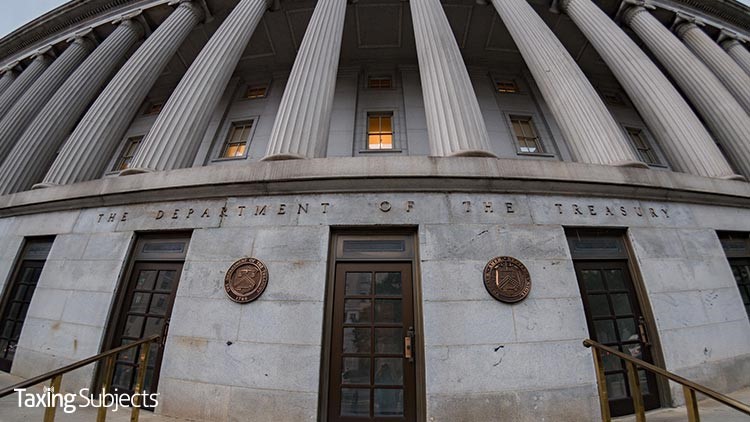by | Mar 31, 2021 | Tax Tips and News
Taxpayers are getting more time to meet some tax deadlines that would normally fall on April 15, such as making IRA contributions and filling certain claims for a refund.
The deadline shift is outlined in Notice 2021-21, which pushes those deadlines to May 17, 2021.
The Internal Revenue Service had announced previously that the federal income tax filing due date for individuals had been extended from April 15 to May 17.
Here’s a look at the various deadlines included in this latest push-back.
Get more time to make contributions to IRAs, health savings accounts
In extending the deadline to file Form 1040-series returns to May 17, the IRS is automatically postponing the deadline to make 2020 contributions to an individual retirement arrangement. This includes IRAs, Roth IRAs, health savings accounts (HSAs), Archer Medical Savings Accounts (Archer HSAs), and Coverdell education savings accounts (Coverdell ESAs).
The time for reporting and payment of the 10% additional tax on amounts includible in gross income from 2020 distributions from IRAs or workplace-based retirement plans has also been delayed to May 17.
Notice 2021-21 also pushes back the due date for Form 5498-series returns related to these accounts to June 30, 2021.
Deadline to seek 2017 refunds extended
For tax year 2017 federal income tax returns, normally the deadline to claim a refund would be April 15, 2021. The law provides a three-year window of opportunity to claim a refund. This deadline has been moved to the May 17 date for filing for 2017 refunds. Note, however, that while the deadline for filing is pushed back, failure to file by that the new date still means the refunds become the property of the U.S. Treasury.
In order to successfully claim a 2017 refund, taxpayers need to properly address, mail and ensure the tax return is postmarked by the May 17 deadline.
May 17 is also the new deadline for foreign trusts and estates with federal tax filing or other payment obligations who file Form 1040-NR.
2021 Annual Filing Season Program
Those tax professionals who are interested in taking part in the Annual Filing Season Program (AFSP) for calendar-year 2021 now have until May 17 to file their application with the Internal Revenue Service. The normal due date is April 15.
Notice 2021-21 has details on the extension, and is posted on IRS.gov. Visit the Tax Pros page on the website for more information about the Annual Filing Season Program.
Estimated tax payments not postponed
Notice 2021-21 does not change the April 15 deadline for estimated tax payments; those are still due on April 15.
Taxes must be paid as taxpayers earn or receive income during the year, either through withholding or estimated tax payments.
In general, estimated tax payments are made quarterly to the IRS by taxpayers whose income isn’t subject to income tax withholding. This can include self-employment income, interest, dividends, alimony or rental income.
Most taxpayers have their taxes automatically withheld from their paychecks and submitted to the IRS by their employers.
To find updates on tax relief as a result of the COVID-19 pandemic, visit IRS.gov.
Sources: IRS extends additional tax deadlines for individuals to May 17
– Story provided by TaxingSubjects.com
by | Mar 31, 2021 | Tax Tips and News
Students and their higher-education institutions are getting a clearer picture of how to report pandemic-related emergency financial aid grants. Or not.
The big news is that the IRS considers aid to students due to the COVID-19 pandemic to be non-taxable.
The Internal Revenue Service used a list of frequently asked questions to pass along the clarification which is aimed both at students and higher-education institutions.
What are the implications for students?
For students, the math is simple. Emergency financial aid grants made by a federal agency, state, Indian tribe, higher education institution or scholarship-granting organization (including a tribal organization) to a student because of an event related to the COVID-19 pandemic are not included in the student’s gross income.
In addition, the IRS says students shouldn’t reduce the amount of qualified tuition and related expenses by the amount of an emergency financial aid grant.
Students who used any portion of the grants to pay for qualified tuition and related expenses on or before Dec. 31, 2020, may be able to claim a tuition and fees deduction, the American Opportunity Credit or the Lifetime Learning Credit on their 2020 tax return.
Higher Education Emergency Grants Frequently Asked Questions has more information online.
The tuition and fees deduction isn’t available for tax years beginning after Dec. 31, 2020. Publication 970, Tax Benefits for Education, has more information on the deduction.
What does this mean for higher education institutions?
When students don’t include emergency financial aid grants in their gross income, the math gets simpler for colleges and universities as well.
In this case, the institutions won’t have to file or furnish Forms 1099-MISC that would otherwise be used to report grants made through the Coronavirus Aid, Relief, and Economic Security Act (CARES Act) or the COVID-related Tax Relief Act (COVID Relief Act). They also don’t need to report the grants in Box 5 of Form 1098-T.
That said, the IRS reminds that any amounts that qualify for the tuition and fees deduction or either one of the education credits are considered qualified tuition and related expenses.
That means they’ll trigger the reporting requirements of Internal Revenue Code section 6050S. Therefore, higher education institutions are required to include qualified tuition and related expenses paid through emergency financial aid grants awarded to students in Box 1 of Form 1098-T.
Sources: Emergency aid granted to students due to COVID are not taxable.
– Story provided by TaxingSubjects.com
by | Mar 29, 2021 | Tax Tips and News
A new announcement from the Internal Revenue Service should come as welcome news to front-line health care workers nationwide. Announcement 2021-7 clarifies existing language to assure taxpayers that the purchase of personal protective equipment (PPE) can be deductible.
When items such as masks, hand sanitizer and sanitizing wipes are purchased to prevent the spread of coronavirus, the IRS says the purchase is deductible.
The announcement says money spent on items for the primary purpose of preventing the spread of COVID-19 will be treated as amounts paid for medical care under section 213(d) of the Internal Revenue Code.
This means amounts paid by an individual taxpayer for COVID-19 PPE for use by the taxpayer, the taxpayer’s spouse or the taxpayer’s dependents that aren’t compensated by insurance or other means are deductible under section 213(a) – provided the taxpayer’s total medical expenses exceed 7.5% of their adjusted gross income.
Amounts paid to purchase PPE can also be paid or reimbursed using health flexible spending arrangements (health FSAs), Archer medical savings accounts (Archer MSAs), health reimbursement arrangements (HRAs) or health savings accounts (HSAs).
The announcement makes it clear, however, that if an amount is paid or reimbursed by any of these spending arrangements, it cannot be deducted under section 213.
Announcement 2021-7 also says some group health plans may not permit reimbursement now, but can be amended under the new terms to provide it without violating the health plans’ qualifications under the law.
Who qualifies for the deduction?
The IRS’ online tool to check qualifications for such a deduction is located on their Can I Deduct My Medical and Dental Expenses? web page, located on the IRS website, IRS.gov. To use this tool, taxpayers will need to have some information handy:
- Filing status.
- Type and amount of expenses paid.
- The year in which the expenses were paid.
- Their adjusted gross income.
- If they were reimbursed or if expenses were paid out of a Health Savings Account or an Archer Medical Savings Account.
Other help can be found in Publication 502, Medical and Dental Expenses. Publication 502 covers many common medical expenses but not every possible medical expense. If taxpayers can’t find the expense they are looking for, they should refer to the definition of medical expenses under What Are Medical Expenses.
Sources: Face masks and other personal protective equipment to prevent the spread of COVID-19 are tax deductible; Can I Deduct My Medical and Dental Expenses?; Announcement 2021-7; Publication 502 (2020), Medical and Dental Expenses.
– Story provided by TaxingSubjects.com
by | Mar 26, 2021 | Tax Tips and News
The CARES Act was the first of three major COVID-relief packages that have infused the US economy with stimulus funds provided for items like direct payments, new and expanded tax credits, forgivable business loan programs, and extended unemployment insurance. Identity thieves responded by deploying a host of scams that try to steal those federal dollars from hard-hit Americans, leading to a near-constant stream of alerts from the Internal Revenue Service and the Federal Trade Commission.
This week, an FTC warning focuses on a new phishing threat targeting unemployment benefits. As the ambulance chasers of the criminal underworld, identity thieves leap at every opportunity to steal information and money from victims of natural disasters and financial crashes. And they see the millions of dollars in unemployment insurance as the perfect opportunity to line their own pockets.
How are identity thieves targeting unemployment compensation?
The FTC says that identity thieves have built fake unemployment websites to trick visitors into providing sensitive personal and financial information. To ensure their victims actually land on these sites, the scammers send phishing emails and text messages containing a direct link.
“These messages look like they’re from a state workforce agency (SWA) and give people links to these fake sites,” the agency explains. “When people enter their sensitive personal information on the fake sites, the scammers can use the information for identity theft.” As with other identity theft scams, criminals use victims’ data to fraudulently apply for bank loans, credit cards, and tax refunds—or just sell it on a Dark Web auction.
How can you tell that an email isn’t actually from a state workforce agency?
The FTC says the first sign that an email or text message isn’t actually from a SWA is that it’s unsolicited and purports to be about the current status of your benefits or an “[invitation] to apply.” Those who do receive one of these messages need to take the following steps:
- Never click links in an unexpected text message or email claiming to be from an SWA.
- If you have applied for UI benefits and get a text or email about your application, contact your SWA directly using contact information from its official website.
- If you need to apply for UI benefits, use this link to find your state’s UI application page [https://www.careeronestop.org/localhelp/unemploymentbenefits/unemployment-benefits.aspx]. Follow the directions you find there.
- If you gave someone your sensitive information, visit IdentityTheft.gov/unemploymentinsurance to learn how to protect your credit from scammers or, if necessary, report that someone has misused your personal information to claim UI benefits. “An SWA will not contact you out of the blue,” the FTC explains. SWAs will not send a text message or email inviting you to apply for UI benefits.
Unfortunately, not everyone clearly identifies an unemployment phishing scam before it’s too late. That’s why it’s also important to know the signs that you are already a victim of an unemployment-related phishing scam.
How do I know if I’ve been the victim of unemployment-related identity theft?
An IRS alert from late February notes that receiving a Form 1099-G for unreceived unemployment compensation is one of the first signs of unemployment-related identity theft.
If any of your clients receive an incorrect 1099-G and suspect their information has been stolen, the agency says they shouldn’t file a Form 14039, Identity Theft Affidavit, unless their “e-filed return is rejected because a return using the same Social Security number already has been filed.” However, since unemployment compensation is managed by the states, affected taxpayers still need to take some action: “Contact the issuing state agency to request a revised form.”
This step is important because unemployment benefits are taxable, and taxpayers should only list the amount for which they are liable on their return. That said, the American Rescue Plan Act of 2021 retroactively excludes up to $10,200 in unemployment benefits paid to taxpayers with an adjusted gross income that is less than $150,000 (this limit applies for each spouse in the case of married couples filing jointly).
Important: Unemployment up to $10,200 should not be used to calculate AGI when determining eligibility for the $10,200 exclusion. The IRS Unemployment Compensation Exclusion worksheet was updated on March 23, 2021, to reflect this clarification, and those who already filed a tax-year 2020 return using the March 12 worksheet “should not file an amended return at this time.” The agency says it “will issue additional guidance as soon as possible.”
Sources: “Scammers reportedly using fake unemployment benefits websites as phishing lures,” FTC.gov; “COVID Tax Tip 2021-24,” IRS.gov
– Story provided by TaxingSubjects.com
by | Mar 25, 2021 | Tax Tips and News
It’s easy to imagine that early bird tax filers are punctual in everything they do, maybe even embodying that Ben Franklin wisdom about bedtimes. While they may be the salt of the earth—generally making filing season just a little easier for tax pros—some may get a little impatient when it comes to their refund status. The good news is that the IRS “Where’s My Refund?” tool makes it easy for taxpayers to check their refund status, so you can get back to the mountain of returns sitting on your desk.
How do taxpayers use the “Where’s My Refund?” tool?
The IRS says taxpayers can access the “Where’s My Refund?” tool in two places: IRS.gov/Refunds and the IRS2Go Mobile App.
If on IRS.gov/Refunds, simply scroll down until you find the blue Check My Refund Status button, click it, and—according to the page—be ready to supply the following information:
- Social security number or ITIN
- Your filing status
- Your exact refund amount
The IRS2Go Mobile App is available for download on Amazon, Apple, and Google devices, and checking your refund status still requires the above information. That said, the app has additional features that will let taxpayers make payments, check IRS social media and newsletters, and generate security codes for other IRS accounts.
The agency says “Where’s My Refund?” will display that information after receiving the taxpayer’s return—though it’s available much faster for those who file electronically:
- E-filed returns display refund status within 24 hours
- Paper-filed returns display refund status within 4 weeks
As for what the tool actually displays, the IRS says users will see one of three possible statuses:
- Return Received
- Return Approved
- Return Sent
Regardless of what an individual refund status happens to be, the IRS stresses that calling to ask about a return or request transcript won’t make things go faster (something you can relate to, I’m sure). That said, there are some legitimate reasons that can cause a logjam in the refund process.
What causes refund delays?
In addition to paper-filed returns being slower to arrive and process, the IRS notes four things that can slow down the refund process:
- The return may include errors or be incomplete.
- The return could be affected by identity theft or fraud.
- The return includes a claim for the Earned Income Tax Credit or Additional Child Tax Credit.
- The time between the IRS issuing the refund and the bank posting it to an account since many banks do not process payments on weekends or holidays.
If there’s a problem with a taxpayer’s return—from incorrect info to duplicate returns—the IRS will reach out to the taxpayer. And, lucky for your clients, paid tax return preparers can often diagnose problems based on error codes they see after e-filing. (For example, a duplicate return error could mean the client is the victim of identity theft.)
Source: IR-2021-60
– Story provided by TaxingSubjects.com





